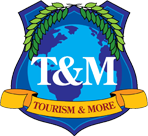Marketing in Good and Challenging Times
February 2014
Marketing is never easy, especially when we are selling a non-tangible and often considered superficial or non-essential product. Many consider tourism such a product. It is the job of the tourism marketer to convince the public that a vacation is more than a mere want; that it is also a need. In 2013 the Board of Directors of the American Marketing Association approved the following definition for marketing: Marketing is the activity, set of institutions, and processes for creating, communicating, delivering, and exchanging offerings that have value for customers, clients, partners, and society at large. (Approved July 2013).
The definition is more challenging for the tourism marketer than it first appears. Tourism marketers must not only prove to their potential clients that their product has value, but in a composite industry there is no one product The tourism experience begins the moment the client (tourist, visitor) leaves home and continues until s/he has returned home. Along the way the tourism marketer must deal with a variety of products that range from the air/bus/train terminal experience (or in the case of a private vehicle: the roadway experience through the restaurant, activity and lodging experience. To make matters even more complicated there is no single tourism customer and each tourism consumer has different expectations, different wants, and different needs. Marketing is then never easy even during periods of economic growth. During less prosperous times, tourism marketing is not only challenging, but also essential. To help you develop a marketing-strategy Tourism Tidbits offers you the following ideas:
- Develop a realistic budget and learn to live within the budget. One of the great mistakes in marketing is spending more than you take in. Be frugal in how you spend your marketing money. Ask yourself what s a realistic expected rate of return on the money that you spend and does the social group at which you are aiming, respond to the marketing techniques that you are using?
- Know what you are marketing. It is amazing how many organizations are confused as to what their base business is. For example, is an airline marketing transportation, travel, or a destination? In tourism it is rare that we are marketing simply relaxation, our most common product is memories. That means that marketing must include not only what the visitor receives during the experience but also what the visitor takes away from the experience.
- Know in which demographic groups you are most likely to succeed. Different groups of visitors want different experiences and different take-aways. It is essential that your marketing match your demographics. Older visitors want a very different experience than younger visitors. Demographics should be broken down by age, gender and in today’s word gender-orientation, cultural desires and needs, distance to be traveled, economic groups. No tourism destination can be all things to all people. Success is defined by matching your tourism offering to the correct demographic group.
- Do not depend on any one form of marketing: Learn to use social media. Social media is a great tool for some demographic groups. It is an error to lump all forms of social media together. Social media has many forms and these forms experience their own market lifecycle. For example, some forms of social media that were in vogue with the under 25 crowd only a few years ago, are now barely considered relevant by members of that generation today. Using social media then means being on top of the current trends and knowing which group not only reads social media, but also perhaps more importantly permits social media to influence its decision-making and believes social media.
- Do not forget to use word of mouth. Word-of-mouth is an effective tool especially when one is marketing to a more educated and upscale market. Although it is slower in reaching vast quantities of potential clients, as a tool it can be highly effective. Word-of-mouth marketing is not simply a haphazard phenomenon. In fact it is estimated that the great majority of products are purchased because someone has told them about it. The best word-of-mouth advertising is based on a clear plan. Here are some word-of-mouth tips to consider and remember word-of-mouth requires out of the box thinking and lots of creativity:
- It is free and therefore we can see word-of-mouth marketing as a great leveler especially for small business that do not have a large advertising budget.
- To get your narrative into the public realm make sure that you live your story. For example, if one of the things that you want people to talk about is your excellent customer service, then be sure to provide excellent service. The goal is to have a brand or narrative and then live the narrative.
- Give your customers the sense that they are part of you; that the narrative belongs as much to them as it does to you. You can accomplish this goal by giving people the sense that they are “insiders” and part of your business family. To do this you have to ask your clients their opinions and then report their answers back to them. If customers want to see a change, then acknowledge their communication and demonstrate that what they say matters.
- Meet with some of your customers. Invite them to face-to-face conversations with your senior management; let them know that they are on the same team as you.
- Listen more and talk less. The more you listen the more others will talk about you. Getting customer feedback in an unobtrusive and polite way shows that you care and the hospitality industry is nothing without caring.
- Compete against yourself and not against your colleagues. Good marketing is not negative marketing. Using negative marketing may work in political campaigns, but rarely if ever works in tourism. The best marketing is when you are able to demonstrate to the public that your great offering has now become even better. That means you have to know what your offerings are and what “better” means to your public.
- You have to be open to get business. All many stores especially in smaller communities have irregular hours. Good marketing makes no sense if you cannot get to a person. The same is true of large companies that put people on hold for long periods of time, have telephone call centers where the people working do not speak the local language or give the impression that it is only a job. If you are not available then your marketing efforts cannot succeed.
- Looks and the way your personnel act do matter. How you interact with the public does matter. That means that personnel must look and speak in a professional way. No customer judges your tourism business on what you say your represent but rather what the customer observes about you. Tourism is all about good service and the best marketing comes about when we do what we say we do, and allow people to live our collective dreams.



